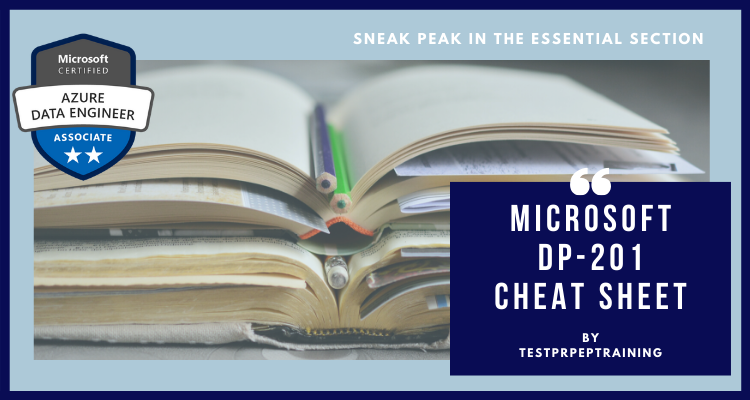The Microsoft DP-201 exam, also known as the “Designing an Azure Data Solution” exam, is a certification exam for data professionals who design and implement solutions that optimize the use of data services in Microsoft Azure. This exam measures your ability to design Azure data storage solutions, design data processing solutions, and design for data security and compliance. When you pass this exam, you become a Microsoft Certified: Azure Data Engineer Associate.
Microsoft DP-201 Exam Glossary
Here are some key terms and concepts that are relevant to the Microsoft DP-201 exam:
- Azure Data Factory – A cloud-based data integration service used to create, schedule, and manage data pipelines.
- Azure Databricks – A collaborative Apache Spark-based analytics platform that allows data engineers and data scientists to work together on big data projects.
- Azure HDInsight – A cloud-based service for managing big data workloads using popular open-source frameworks such as Hadoop, Spark, Hive, and HBase.
- Azure Cosmos DB – A worldwide, flexible database service made for apps that need to be big and always available.
- Data Lake Storage – A cloud-based storage solution that provides high-performance storage and analytics for big data workloads.
- Azure SQL Database – A cloud-based database service that makes sure your apps are always available, can grow as needed, and stay secure.
- Azure Stream Analytics – A real-time analytics service that allows you to analyze streaming data from various sources such as IoT devices, social media, and log files.
- Data compression – A technique used to reduce the storage space required for data by encoding it in a more efficient format.
- Data partitioning – A technique used to divide large datasets into smaller, more manageable partitions that can be processed in parallel.
- Data replication – A technique used to create redundant copies of data for increased availability and reliability.
- Encryption – A technique used to protect sensitive data by transforming it into an unreadable format using a cryptographic algorithm.
- Data masking – A technique used to obscure sensitive data in order to comply with data protection regulations and maintain privacy.
- Data lineage – The record of data’s origin, movement, and transformation throughout its lifecycle, including its sources, processing steps, and outputs.
- Data catalog – A centralized repository of metadata that provides information about data assets, including their location, structure, and relationships.
- Data governance – The process of managing the availability, usability, integrity, and security of data used in an organization.
Microsoft DP-201 Exam Guide
Microsoft DP-201 is a certification exam for designing and implementing data solutions using Azure services. Here are some official links and resources to help you prepare for the exam:
- Exam DP-201: Designing an Azure Data Solution – Microsoft Learn: https://docs.microsoft.com/en-us/learn/certifications/exams/dp-201
- DP-201 Designing an Azure Data Solution Certification Prep – edX: https://www.edx.org/course/dp-201-designing-an-azure-data-solution-certifica
- DP-201 Exam Study Guide – Microsoft Docs: https://docs.microsoft.com/en-us/learn/certifications/exam-dp-201
- Azure Data and AI Learning Path – Microsoft Learn: https://docs.microsoft.com/en-us/learn/paths/azure-data-ai/
- Azure Synapse Analytics documentation: https://docs.microsoft.com/en-us/azure/synapse-analytics/
- Azure Cosmos DB documentation: https://docs.microsoft.com/en-us/azure/cosmos-db/
- Azure Data Factory documentation: https://docs.microsoft.com/en-us/azure/data-factory/
- Azure Databricks documentation: https://docs.microsoft.com/en-us/azure/databricks/
- Azure HDInsight documentation: https://docs.microsoft.com/en-us/azure/hdinsight/
- Azure Stream Analytics documentation: https://docs.microsoft.com/en-us/azure/stream-analytics/
Microsoft DP-201 exam tips and tricks
- Understand the Exam Format: The DP-201 exam consists of multiple-choice questions and is a timed exam. Make sure you understand the format of the exam before you take it.
- Read the Exam Objectives: The exam objectives provide an outline of what you will be tested on during the exam. Make sure you read and understand each objective before you start studying.
- Practice with Azure Services: It’s important to have hands-on experience with the Azure services covered in the exam, such as Azure Synapse Analytics, Azure Cosmos DB, Azure Data Factory, Azure Databricks, Azure HDInsight, and Azure Stream Analytics.
- Use Official Study Materials: Microsoft provides official study resources like Microsoft Learn lessons, practice tests, and a study guide to get you ready for the exam.
- Take Practice Tests: Practice tests can show you what you’re good at and where you need to improve. They also help you get used to how the exam is set up.
- Join Study Groups: Joining a study group can provide you with the opportunity to learn from other individuals who are also preparing for the exam.
- Focus on Azure Security: Security is an important aspect of data solutions, and the DP-201 exam tests your knowledge on securing Azure services. Make sure you understand Azure security features such as Azure Active Directory, role-based access control, and data encryption.
- Manage Your Time: Make a study schedule and manage your time effectively. Plan ahead and allocate enough time to study for the exam.
- Take Breaks: It’s important to take breaks while studying to avoid burnout. Taking breaks can help you recharge and stay focused.
- Be Confident: Believe in yourself and your ability to pass the exam. Stay positive and confident, and don’t let exam anxiety get the best of you.
Looking for the ultimate DP-201 cheat sheet?
Microsoft DP-201 exam is getting retired on June 30, 2021. A new replacement exam Data Engineering on Microsoft Azure Beta (DP-203) is available.
When you start preparing for your certification exam, there are some simple but effective methods to ensure you’re covering all the important things. Many people think just reading a book will get them ready, but that’s usually not enough for certification exams. Knowing the information is just one part of what you need to do to pass the test. Therefore, today we’re going to provide you with the DP-201 cheat sheet. This will provide you with quick facts to remember on exam day to help you answer questions found on the DP-201 Certification exams. So, before you get warmed up, let’s quickly take a tour of the exam details.
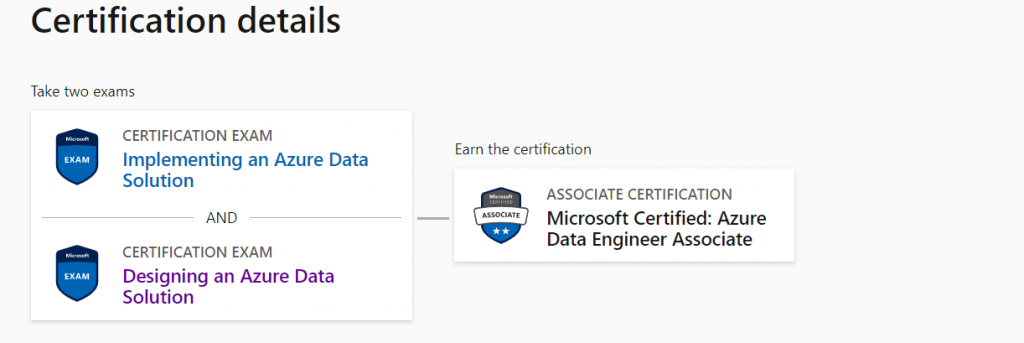
Taking an Overview Tour
To become an Azure Data Engineer Associate, the first step after the DP-200 exam is to take the DP-201: Designing an Azure Data Solution exam. In the DP-200 exam, you learn how to put data solutions into action. But in the DP-201 exam, you learn how to create data solutions by working with business partners. After passing this exam, you’ll be able to do the following tasks:
- First, candidates will learn how to use Azure data services to create data solutions and meet data needs.
- Second, candidates will gain a better understanding of designing data solutions that use Azure services like Azure Cosmos DB, Azure SQL Database, Azure SQL Data Warehouse, Azure Data Lake Storage, Azure Data Factory, Azure Streaming Analytics, Azure Databricks, and Azure Blob storage.
- Not to mention, The DP-200 exam checks if a person can do different things like creating Azure data storage, handling data, keeping it safe, and making sure it follows the rules.
- In the same vein, the candidate while conducting data-related tasks will also include designing Azure data storage solutions.
Basic Details
The DP-201 exam has 40-60 questions, and you get 210 minutes to finish it. You have 180 minutes to answer the questions and 30 minutes for reading instructions, signing an agreement, and giving feedback. Here’s a table for a clearer view:
For more information regarding the DP-201 exam, CLICK HERE.
Course Outline
Most important of all is the Course Outline. Understanding each and every aspect of the Course Outline will enable you to grasp information, leading towards the credentials. So, make sure not to skip this part.
Design Azure Data Storage Solutions (40-45%)
- Firstly, recommending an Azure data storage solution based on requirements
- Secondly, designing non-relational cloud data stores
- Subsequently, designing relational cloud data stores
Design Data Processing Solutions (25-30%)
- On one hand, designing batch processing solutions
- On the other hand, designing real-time processing solutions
Design for Data Security and Compliance (25-30%)
- Firstly, designing security for source data access
- Secondly, designing security for data policies and standards
Microsoft DP-201 Cheat Sheet
This particular cheat sheet will help you go through the most important sections of the examination. So, without further adieu, let’s get started-
In this section, we have curated seven sections, each taking you through the Course Outline. This will enable you to memorise and offer you a recap, for those last moments swotting.
Important Knowledge Areas
Below mentioned are a few important areas, that you must have in-depth knowledge about. So, these are as follows-
On-premises and Cloud-based servers
When traditional hardware and infrastructure components near the end of their life cycle, many organizations consider digital transformation projects. Here we’ll consider options for those transformations. We’ll look at features of both on-premises and cloud environments. The table below explains the difference between the two.

Data Abundance and digital transformation
Azure provides a comprehensive and rich set of data technologies that can store, transform, process, analyze, and visualize a variety of data formats in a secure way. As data formats evolve, Microsoft continually releases new technologies to the Azure platform. Azure customers can explore these new technologies in preview mode. Using the on-demand Azure subscription model, customers can minimize costs, paying only for what they consume and only when they need it.

Data Storage and Azure
Data comes in different shapes and sizes, and no single storage solution fits all data. Therefore, these are steps before you use data and use it in accordance with Azure:

- Classify Data
- Identify Operational Needs
- Multiple Operations
- Storage Solution on Azure
Relational Data and Azure
Azure backs up several popular SQL-based database solutions including SQL Server, PostgreSQL, and MySQL. Below is the process to connect your data and add sample data to it.

Key Concepts
- Microsoft Azure SQL Server – Identify the right Azure SQL Server deployment option, purchasing model and service tier according to requirements and deploy it in the cloud. Also, it allows setting up a security configuration to secure your database.
- Microsoft Azure SQL Data Warehouse – This allows to deploy Azure Synapse Analytics (formerly known as Azure SQL Data warehouse) in Azure Cloud environment. Not to mention, provides good internal MPP architecture understanding. Moreover, analyzes your on-premises data warehouse and migrate data to Azure Data Warehouse.
- Microsoft Azure Data Lake – Helps in creating Azure Data Lake storage account, populate it will data using different tools and analyze it using Databricks and HDInsight
- Microsoft Azure Data Factory – Understand Azure Data Factory’s key components and advantages. And, create, schedule and monitor simple pipelines.
- Hadoop Basics – Learn the fundamental understanding of the Hadoop Ecosystem and 3 main building blocks. Learning Big Data in Azure Cloud using HDInsight.
- Microsoft Azure HDInsight – Utilizing HDInsight makes Hadoop easy. Fetching data from Data Lake, process it through Hive and later will store data in SQL Server.
Questions to Consider
There will be always important topics from which questions are always asked. Therefore, these are our picks-
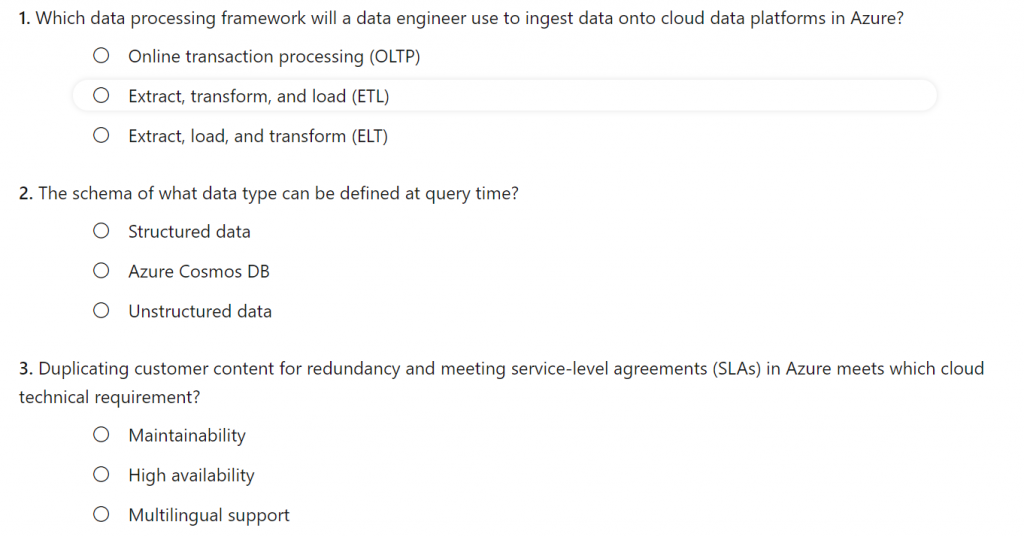
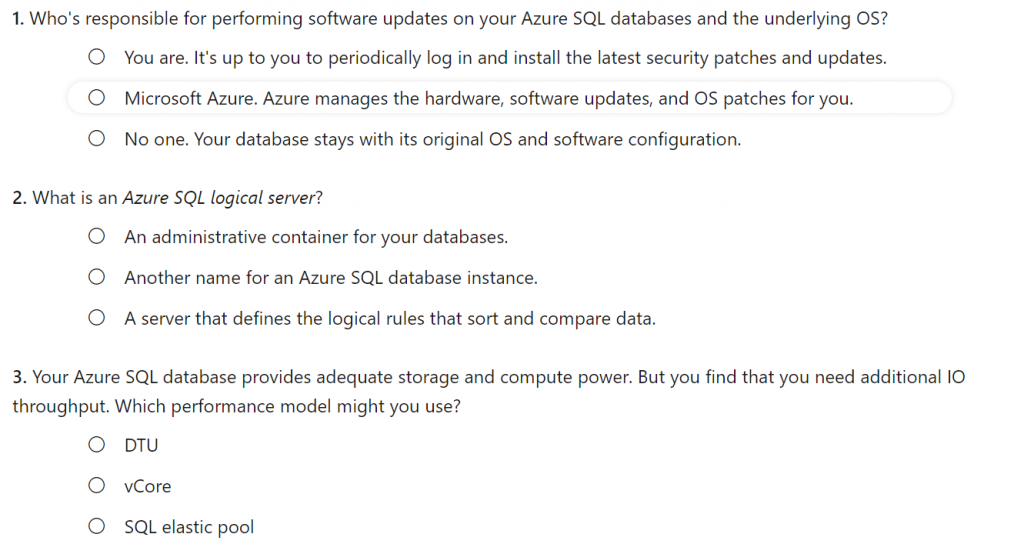
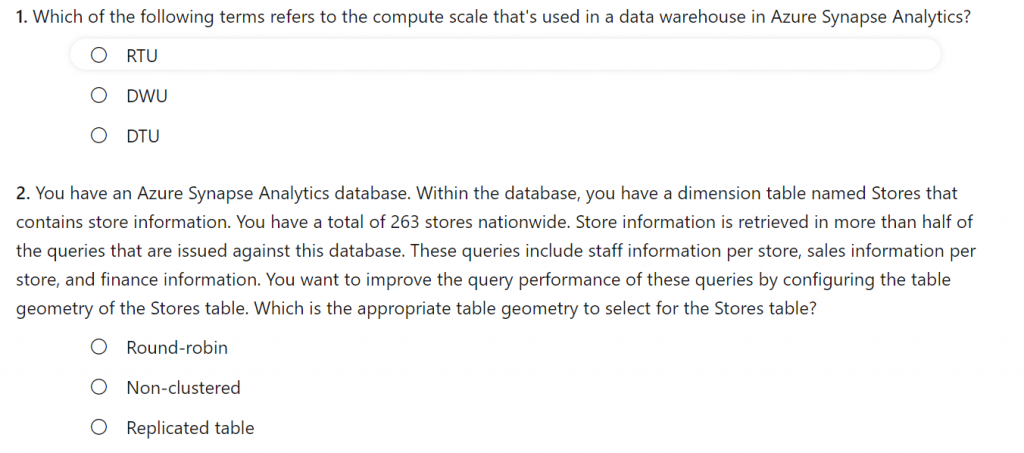
Closing Thoughts
Understand that cheat sheet only offers some important points. So, try not to begin with the DP-201 cheat sheet. Therefore, it is highly recommended that you begin by reviewing the blueprint and form a study group so you have supported the entire time. So, make sure to preparatory guide for DP-201 exam. The candidate can save a lot of time, effort, and money by studying only once using complete and comprehensive exam prep materials that prepare you to pass on your first attempt. And, we guarantee success for you.

Make your resume stand out and become a Microsoft Certified: Data Engineer Associate. Try free practice tests here!

